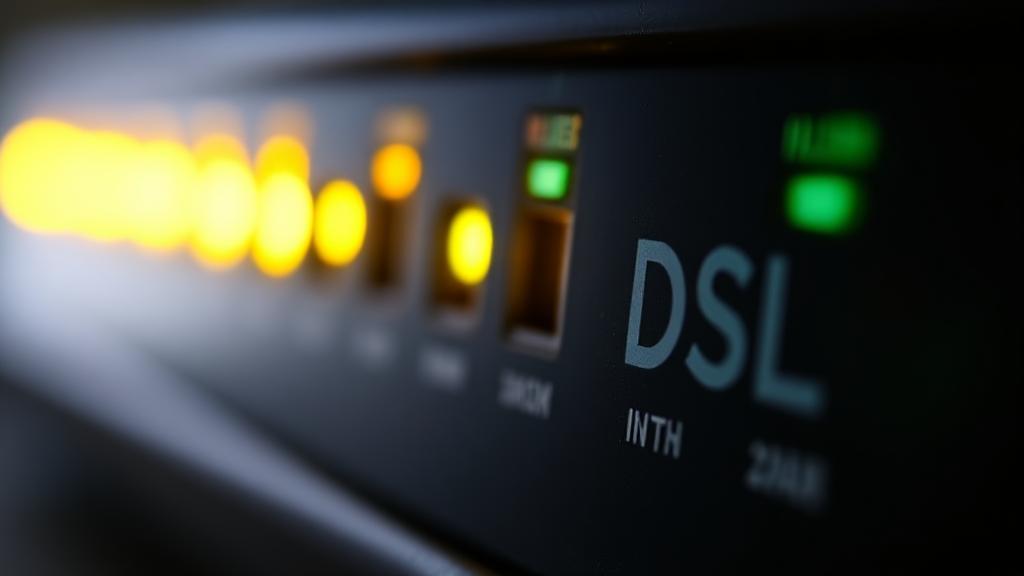Introduction to DSL
Digital Subscriber Line (DSL) technology is a family of technologies that provide internet access by transmitting digital data over the wires of a local telephone network. It is a popular choice for broadband internet access, especially in areas where cable or fiber-optic internet is not available, due to its widespread availability and relatively low cost.
How DSL Works
DSL technology utilizes existing copper telephone lines installed in homes and businesses. Unlike traditional dial-up connections, DSL can carry both voice and data simultaneously by splitting the frequency spectrum of the telephone line into two bands: one for voice and the other for data.
Frequency Division
The key to DSL's ability to transmit data and voice simultaneously lies in frequency division. The lower frequency band is used for voice communication, while the higher frequency band is reserved for data transmission. This separation allows users to make phone calls and access the internet at the same time without interference.
Modulation Techniques
DSL employs various modulation techniques to encode data onto the higher frequency band. The most common technique is Discrete Multi-Tone (DMT), which divides the data stream into multiple channels, each carrying a small portion of the data. This method enhances the reliability and speed of the connection.
Types of DSL
-
ADSL (Asymmetric Digital Subscriber Line)
- Most common type for residential use
- Faster download speeds than upload speeds
- Typically offers up to 24 Mbps downstream
-
VDSL (Very High-Speed Digital Subscriber Line)
- Higher speeds than ADSL
- Can reach up to 100 Mbps downstream
- Requires shorter distances to the provider
-
SDSL (Symmetric Digital Subscriber Line)
- Equal upload and download speeds
- Popular for business applications
- Ideal for video conferencing and cloud services
Distance Limitations
One of the primary factors affecting DSL performance is the distance between the user's location and the provider's central office (CO).
The signal degrades approximately 13.81 dB per kilometer, affecting maximum achievable speeds.
Maximum Distance Guidelines
| Distance from CO | Maximum Speed |
|---|---|
| Under 1km | Up to 50 Mbps |
| 1-3km | Up to 24 Mbps |
| 3-5km | Up to 8 Mbps |
| Over 5km | Limited service |
Modern DSL Technologies
Recent advances have introduced new DSL variants that offer improved performance:
G.fast
- Delivers fiber-like speeds over short distances
- Can achieve up to 1 Gbps in ideal conditions
- Limited to distances under 500 meters
Vectoring
Reduces interference between multiple DSL lines in the same cable bundle through:
Advantages of DSL
- Wide availability due to existing telephone infrastructure
- Dedicated connection not shared with neighbors
- Cost-effective compared to fiber optic installations
- Simultaneous voice and data transmission
Limitations of DSL
- Distance Sensitivity: The speed and quality of a DSL connection decrease with distance from the central office.
- Limited Speed: While DSL offers decent speeds, it cannot match the high speeds provided by fiber-optic connections.
- Infrastructure Dependency: DSL relies on existing telephone infrastructure, which may not be available in all rural areas.
- Interference: DSL signals can be affected by radio-frequency interference (RFI) or electromagnetic interference (EMI).
Setting Up DSL Service
To establish DSL service, you'll need:
- A DSL modem
- Active telephone line
- DSL filters for voice devices
- Service subscription from an ISP
For more information about DSL technology standards, visit the ITU-T recommendations page or explore the Federal Communications Commission's Broadband Guide.
